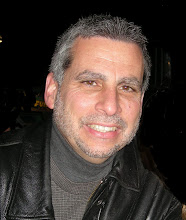A powerful and iconic global brand name is one of the best equities a company has going for them…right?
Well not exactly.
In today’s ever-changing world where brands and companies are routinely bought, sold and merged, what happens to a business – once part of one of the most famous brands in the world – when it is sold into the world or private equity as it tries to re-invent itself under a new brand name?
How do customers respond?
And more importantly, how do the employees of that business respond when they suddenly find they are no longer part of an iconic brand, but now part of a start-up business with a new identity and a famous past.
You say this doesn’t happen. Well it does. Read on.
Before I dive into the story, let me give you some background flavor. Let’s go back to the late 1990s. I was part of the marketing and branding team for Burmah Castrol working in their Americas lubricants business on well-known motor oil brands like Castrol GTX and Castrol Syntec.
One day I came to the office to learn that our 99 year old company had been sold to another globally famous company – British Petroleum. What would become of the Castrol name I thought? Would Castrol GTX now be known as BP GTX. Well the answer was no – although we did give it a lot of thought (but that’s another story!)
The Castrol name would continue to live on as the flagship brand for BP lubricants globally. So to consumers and customers it was still Castrol GTX, but what about to legacy Castrol employees? They still fancied themselves as working for Castrol and seemingly had little desire to embrace the BP name, heritage or culture. Over time (2-3 years to be exact) that eventually did change, particularly when the Castrol name was replaced by the BP logo on the outside of the building and on their paychecks.
That was then…so lets fast forward about ten years.
An iconic American company famous for imagination and bright ideas – let’s call them ED for this story – sells off a small piece of its business to an investment group. The business has been very successful and has been in the market for over 50 years and is well entrenched as a global technology leader in the industry.
The investment group changes the name of the company to INNOVATE (not the real name) and continues to position itself as global leader with a legacy of innovation and market “firsts” – with subtle ties to its heritage as an ED company.
It was right about this time that INNOVATE hired me to help drive their brand awareness around the world externally to customers and internally to employees. In the first few weeks on the job, I could see that INNOVATE had done a good job rebranding themselves with marketing collateral, on the web and across most internal and external touchpoints. This looks pretty good, I said to myself. They have a good brand positioning in place. Maybe I just need to sharpen and push this positioning externally and we’ll be in the right place.
Now that I was feeling good about the external communications, I figured I should do an audit of how the new brand message had been pushed out internally to employees. In the past, I had luck with internal surveys – they had always provided good insights on the strength on how employees spoke to the brand. So I decided to poll employees of INNOVATE to see what they thought their brand stood for.
“Please complete the following sentence for me,” was my first survey question. “INNOVATE, a global industry leader, is positioned as blank?” Clearly I expected most to 'fill in the blank' with something connected to the brand positioning that had been put in place.
“…formally part of ED,” was the first answer.
“I just tell customers we used to be with ED,” was the second response.
“Just sold off by ED and rebranded under a new name,” was the third.
On this went as I polled over 50 people from all functions and regions of the organization. At the end, I could count on one hand the number of people who provided a response not like the first three.
So here was a new organization, that had spent time and dollars to rebrand themselves, they had used resources to develop new materials to communicate externally to customers that their name had changed, but they had neglected to drive awareness among their most important audience – their own employees.
In the end, it is critically important for your employees to wear their brand on their sleeves. They are the best brand ambassadors and advertisers a company has – especially in B2B markets which INNOVATE was part of. They are the ones talking to and conducting business with your customers all day.
When your own employees believe in your brand and can communicate its story and the value the company delivers, it makes BrandSense.
When they are not on board, they are left to make up their own story, or gravitate to what is familiar, or easy. Everyone knew what ED stood for – it was comfortable and well known. Like saying I play baseball for the New York Yankees. But no one knew anything about INNOVATE because it was new, unknown and unfamiliar. So when your own employees can’t say what their company stands for – your brand message is compromised.
And that makes Brand NonSense.
Thursday, August 9, 2012
Subscribe to:
Post Comments (Atom)

No comments:
Post a Comment